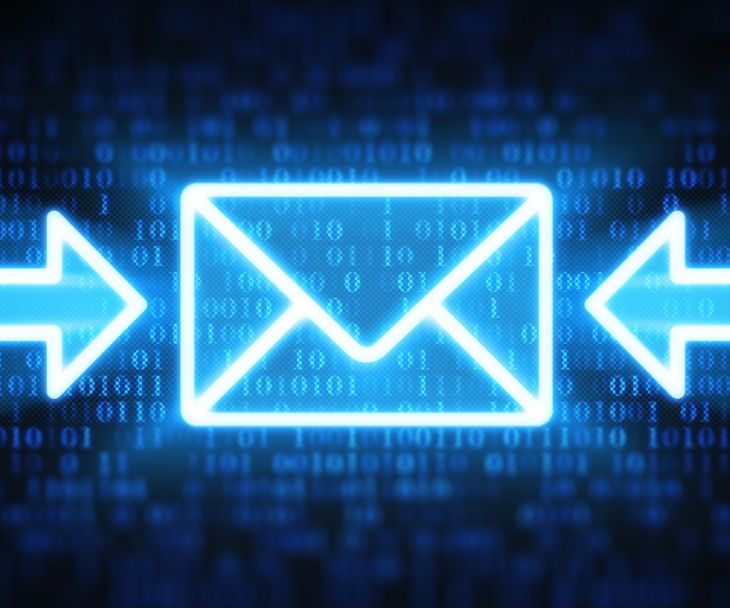4 min read
Why tracking email read receipt data can be useful in healthcare
Kirsten Peremore
April 25, 2024
Tracking email read receipt data in healthcare allows providers to confirm whether information reaches patients and colleagues. This tracking can reveal which messages are being engaged with, helping providers understand how patients interact with health information or instructions. These insights allow providers to optimize their communication.
The common email metrics
Open rate
Usefulness: The open rate measures the percentage of recipients who open an email. It's useful for gauging the initial appeal of your email content, specifically the effectiveness of your subject line and the optimal time of sending.
Implementation: Implemented by tracking a tiny, invisible image embedded in the email, which downloads when the email is opened, thus registering an open.
Click-through rate (CTR)
Usefulness: CTR measures the percentage of recipients who clicked on one or more links contained in the email. It indicates how engaging and relevant the email content is to the audience, guiding improvements in content and design.
Implementation: Links in emails are tagged with tracking codes. When a recipient clicks on a link, the click is recorded and linked back to the specific email campaign.
Conversion rate
Usefulness: Conversion rate tracks how many recipients performed a desired action (like making a purchase or signing up for a webinar) after clicking on a link in the email.
Implementation: Implemented by tracking conversions through linked actions on the website, often using cookies or tracking pixels that identify when a user coming from an email completes a conversion goal.
Bounce rate
Usefulness: Bounce rate measures the percentage of emails that could not be delivered to the recipient's inbox. A high bounce rate may indicate problems with the email list quality or issues with sender reputation. It helps in maintaining a clean, active subscriber list.
Implementation: Email servers provide feedback when an email can't be delivered, classifying bounces as either soft (temporary issues like full inbox) or hard (permanent issues like invalid addresses).
List growth rate
Usefulness: This metric measures the rate at which your email list is growing. Keeping track of list growth helps assess the effectiveness of your list-building strategies and overall interest in your brand.
Implementation: Calculated by subtracting the number of unsubscribes and email bounces from new subscriptions over a specific period, then dividing by the total list size at the start of the period.
Email sharing/Forwarding rate
Usefulness: This rate measures how often your email is forwarded or shared with others. High rates indicate that your content resonates well enough that recipients think it worth sharing, expanding your reach and potential audience organically.
Implementation: Tracked by including "share" or "forward to a friend" buttons in the email, which use special tracking links to monitor when the email is forwarded or shared.
Overall ROI
Usefulness: Overall ROI (Return on Investment) calculates the financial return from an email campaign compared to its cost. This is necessary for understanding the campaign's profitability and guiding budget allocations.
Implementation: Implemented by tracking all associated costs (creative development, software, manpower) and the revenue generated directly from the campaign (using tracking codes and conversion metrics).
Unsubscribe rate
Usefulness: This metric measures the percentage of recipients who unsubscribe after receiving an email. It helps gauge the relevance and reception of your content among your audience. A high rate may indicate content fatigue, irrelevance, or frequency issues.
Implementation: Tracked every time a recipient clicks the unsubscribe link in an email, which should ideally lead to an automatic removal from the mailing list.
See also: 5 email marketing stats for healthcare providers
The benefit of tracking email read receipts
Based on a 2020 study on the topic of how to assess non response in biases in research, it was identifies that, “Utilizing and analyzing patterns in email read receipts could also be useful…”
Knowing if and when emails are opened helps healthcare providers gauge the engagement level of their audience. This allows healthcare organizations to tailor future messages more effectively or follow up with recipients who have not opened communications.
Specific features of email tracking, such as open rates, the time emails are read, and the frequency of opens, contribute valuable insights. These metrics help in refining the content and timing of emails, making them more relevant and timely for recipients. This targeted approach can improve patient outcomes by making sure they receive pertinent information when they need it most.
Email read receipts can also be designed to align with HIPAA compliance. By combining secure HIPAA compliant email services with email systems that offer read receipts, healthcare providers can create an environment where patient data is secure and marketing goals are met.
How to track email read receipts
- Webhook integrations: Some email services support webhooks, which are HTTP callbacks that provide real-time data to other applications. By integrating webhooks, you can get immediate updates when actions are taken on your emails, such as opens or link clicks.
- Custom tracking domains: Using custom tracking domains in your emails rather than generic URLs can improve deliverability and tracking accuracy. By hosting the tracking pixel or links under a domain you control, you avoid being flagged as spam and gather more reliable metrics.
- Behavioral email sequencing: Implement tools that not only track whether an email was opened but also trigger a series of follow-up emails based on user behavior. For instance, if a recipient opens an email but doesn't click any links, a follow-up email could be sent to re-engage them.
- Email client plugins: For more personalized or small-scale email campaigns, plugins can be integrated directly into your email client (like Gmail or Outlook). These plugins provide read receipt functionalities with additional features such as link tracking and real-time notifications.
- Encrypted email tracking: In environments where privacy and security are necessary consider using secure email services that offer read receipt functionalities compliant with standards like HIPAA. HIPAA compliant email services like Paubox offer encrypted email solutions with features that don't compromise on security.
- A/B testing with tracking: Use email platforms that support A/B testing where different versions of your email are sent to subsets of your audience. Track which version has a higher open rate and use this data to refine your emails.
- Heat maps: Some advanced email marketing tools offer heat maps that show where recipients clicked within your email. This visual tool can be extremely helpful in understanding which parts of your email are most engaging and which call-to-action works best.
See also: Top 12 HIPAA compliant email services
FAQs
What technology is used to track email read receipts?
Email read receipts are typically tracked using small, invisible images known as tracking pixels embedded in emails, or through software features that request a notification when an email is opened.
Can patients opt out of email tracking in healthcare communications?
Yes, patients generally have the option to opt out of email tracking.
What happens if a patient does not open an important healthcare email?
If tracking data shows that a patient has not opened an email, healthcare providers can take additional steps to ensure the message is received.
Subscribe to Paubox Weekly
Every Friday we'll bring you the most important news from Paubox. Our aim is to make you smarter, faster.




